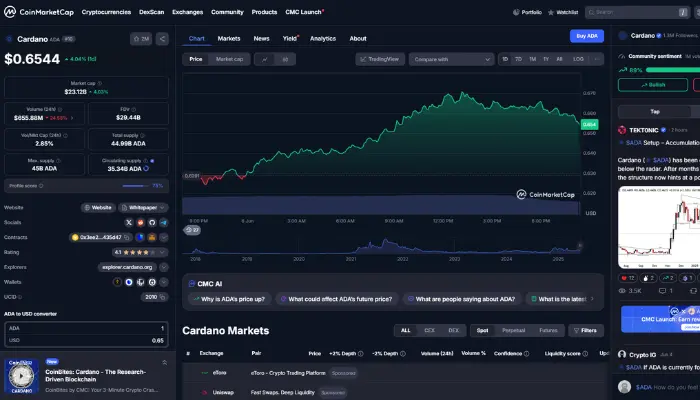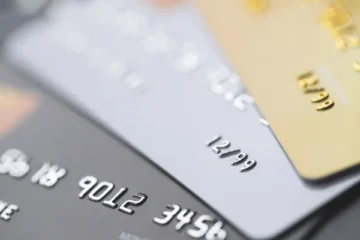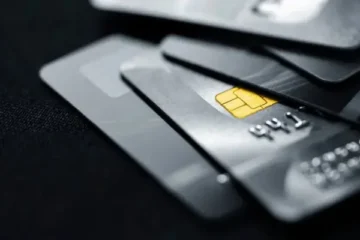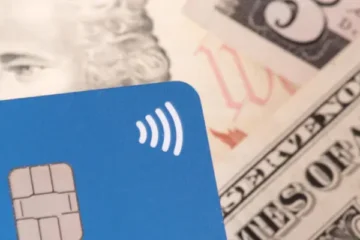Top Advantages and Risks of Investing in Cardano (ADA)
If you’re thinking about jumping into crypto, you’ve probably heard of Cardano — or maybe seen the symbol ADA floating around next to a bunch of other coins.
Advertisement
But don’t worry, you don’t need to dive into a bunch of YouTube videos or complicated forums. Here, you’ll get the full scoop on Cardano in a way that actually makes sense — straight talk, no fluff, and easy for everyday folks to understand.
Advertisement
Let’s break it down.
What is Cardano (ADA)?
Cardano is a blockchain platform, kind of like Ethereum, but with its own unique style. It was created to support smart contracts, decentralized apps (dApps), NFTs, games — the whole deal. But what really makes it different is the academic and peer-reviewed approach behind it.
Advertisement
The currency used within the network is called ADA, named after Ada Lovelace, one of the very first computer programmers — back in the 1800s! You can use ADA to pay fees, stake for rewards, vote on proposals, and more.
How is Cardano Different from Other Cryptocurrencies?

The first major difference is how it was built. While other coins kinda launched with a “let’s wing it” mindset, Cardano was created with solid research and planning.
It was founded by Charles Hoskinson, who also co-founded Ethereum — but then left to build a blockchain that’s safer, more scalable, and more sustainable.
Another big difference? Cardano uses something called Proof-of-Stake (PoS), which uses way less energy than Proof-of-Work (used by Bitcoin). That means no massive mining farms needed to keep it running.
And Cardano runs on a layered architecture: one layer handles transactions, the other handles smart contracts. That helps avoid bugs, keeps things modular, and improves overall performance.
What is ADA Used For?
Think ADA is just another coin to buy, hold, and hope it moons someday? Not even close. Inside the Cardano ecosystem, ADA actually does a lot of heavy lifting. It’s not just a token sitting in your wallet collecting dust — it’s the fuel that keeps everything running.
Whether you’re sending money, using apps, staking for passive income, or even voting on big decisions that shape the future of the network, ADA plays a key role. If you’re planning to get into Cardano, it’s worth knowing exactly how this coin fits into the bigger picture.
- Pay transaction fees (like gas fees on Ethereum)
- Stake and earn rewards
- Vote on network updates
- Transfer value quickly and cheaply
- Interact with apps and games on the blockchain
So if you thought ADA was just for holding and waiting for the price to go up, think again — it’s got a lot of use cases.
How Does Cardano’s Blockchain Work?
Cardano isn’t just another crypto project running on copy-paste code — its blockchain is built from the ground up with a pretty smart structure.
Most blockchains try to do everything in one big layer, but Cardano took a different route and split things into two. That setup gives it more flexibility, fewer bugs, and better performance when things get busy.
On top of that, it runs on a special system called Ouroboros, a consensus method backed by serious academic research — we’re talking peer-reviewed studies, not just ideas tossed around on Reddit.
The result? A network that’s built to scale, stays secure, and actually makes sense for long-term growth.
- Settlement layer (CSL) – where transactions using ADA happen.
- Computation layer (CCL) – where smart contracts and apps live.
This separation makes the network more stable and flexible. Cardano uses a unique consensus algorithm called Ouroboros, which is based on peer-reviewed academic research. Yep — like a college project but for real-world money.
The result? A secure, scalable blockchain that doesn’t freak out when a lot of people use it at once.
Is Cardano a Good Investment in 2025?
Thinking about putting some money into Cardano this year? You’re not alone. ADA has been on a lot of people’s watchlists — especially for folks who want a long-term crypto play that’s more than just hype.
Back in 2021, Cardano hit over $3 per coin, but like the rest of the crypto world, it took a dive after that. Now in 2025, the buzz is starting to come back, and for good reason.
Cardano’s development has been slow and steady — not flashy, but solid. And while that might not attract short-term traders, it’s exactly what some investors are looking for: a project that’s built to last.
Here’s what makes Cardano worth considering:
- Scalable and secure: The tech behind Cardano is made to handle growth without crashing or getting super expensive to use.
- Cheap transactions: Whether you’re sending ADA or using apps on the network, you’re not paying crazy high fees like on Ethereum.
- Strong community: There’s a dedicated crew of developers and fans constantly working on and promoting the project.
- Real-world partnerships: Cardano has teamed up with universities and even some governments, especially in developing countries — that’s long-term vision right there.
But it’s not all sunshine:
- Tough competition: Ethereum is still the big dog, and faster chains like Solana are fighting hard for the spotlight.
- Slow rollout: Cardano’s “research first” approach means updates and features take time. Sometimes a lot of time.
- Lack of blockbuster apps: There’s still no viral dApp on Cardano that’s drawn in everyday users by the millions.
Bottom line? If you’re looking for quick flips or overnight gains, Cardano might feel too slow for your taste. But if you’re thinking long-term and want something with real structure and purpose behind it, ADA could be a smart addition to your portfolio.
Just like with any investment — do your homework and never invest more than you can afford to lose.
How to Buy Cardano (ADA) Safely?
Thinking about buying some ADA? Good call — but before you jump in, let’s make sure you do it the smart way. Crypto might feel easy to get into, but it’s also full of scams, fake apps, and sketchy websites just waiting for someone to slip up.
The good news? Buying ADA the right way is simple if you stick to legit platforms and follow a few basic steps.
Here’s a quick, no-BS guide to buying Cardano without getting burned:
- Choose a trusted exchange: Coinbase, Binance US, Kraken, etc.
- Create your account: Name, email, ID — the usual stuff.
- Add funds: Use a bank account, debit card, or sometimes PayPal.
- Search for “Cardano” or “ADA”: Choose how much to buy.
- Buy and store it: Ideally, move your coins to a private wallet.
Avoid buying ADA through sketchy websites, Instagram messages, or “limited-time deals.” If it sounds too good to be true — it probably is.
How Does ADA Staking Work and How Much Can You Earn?
Got some ADA sitting in your wallet? Instead of just letting it chill there, you can actually put it to work — and earn passive income while you’re at it.
That’s where staking comes in. It’s kind of like earning interest at a bank, but way more crypto-friendly. You help support the Cardano network by “delegating” your ADA, and in return, you get rewarded.
No need for fancy equipment or being a tech expert — it’s super beginner-friendly.
Here’s how it works and how much you can realistically make:
- Have ADA in a compatible wallet (Yoroi, Daedalus, or even on some exchanges).
- Pick a staking pool.
- Delegate your ADA (you don’t actually send it, just assign it).
- Wait for reward cycles.
You can earn around 4% to 6% yearly, depending on the pool. And your coins stay in your wallet — safe and earning.
Pros and Cons of Cardano
Every crypto project has its strengths and weaknesses — and Cardano is no different. While some folks love how serious and research-based it is, others get impatient with the slower rollouts and fewer flashy apps.
If you’re trying to figure out whether ADA deserves a spot in your portfolio, it helps to lay out the good and the not-so-good side by side.
Here’s a quick look at what Cardano brings to the table — and what still needs work:
Pros:
- Energy-efficient: Uses Proof-of-Stake instead of energy-hungry mining like Bitcoin.
- Backed by science: Built on peer-reviewed academic research and tested technology.
- Low fees: You don’t have to break the bank to send or stake ADA.
- Scalable: Designed to grow without getting clunky or slow.
- Secure and modular: Two-layer architecture helps keep things clean and stable.
Cons:
- Slower development: They take their time (sometimes too much time) to roll things out.
- Lack of big-name apps: Still waiting for that killer app that puts Cardano on the mainstream map.
- Limited brand adoption: Big businesses haven’t jumped in just yet like they have with Ethereum.
Cardano plays the long game. If you’re cool with patience and want something solid, it’s a strong pick. But if you’re chasing fast hype or instant results, it might feel a bit too chill for your taste.
Is Cardano Safe?
Yes — very. Cardano is one of the most secure crypto projects out there. It’s open-source, transparent, with audited code and a solid team behind it.
It’s also never been hacked — which is more than you can say for a lot of other coins. Having Charles Hoskinson leading the project gives it a face and direction that builds trust.
What Projects Are Being Built on Cardano?

Cardano might not be making headlines with flashy apps just yet, but don’t let that fool you — there’s a lot happening under the hood. The ecosystem is slowly but surely coming to life, with new projects popping up that actually solve real problems, not just chase hype.
From decentralized exchanges to social impact platforms and even NFTs, Cardano’s building a strong foundation. Let’s check out some of the coolest things already running on the network.
- SundaeSwap – A DEX (decentralized exchange)
- Meld – A DeFi lending platform
- Empowa – A social housing project in Africa
- Native NFTs – Yes, you can mint NFTs directly on Cardano
The network is growing steadily. And that slow-and-steady approach? It might actually work better in the long run.
Does Cardano Have a Future? What Experts Say
Most analysts agree that Cardano is a solid long-term project. It’s especially gaining traction in developing countries. Its partnerships with African governments and academic institutions are proof that real use cases are being developed.
But here’s the general take: Cardano is a marathon, not a sprint. The price might take time to blow up, but the true value is in its strong, research-backed foundation.
Is Cardano a Good Option for Beginners?
Just getting your feet wet in the crypto world? You’re not alone — and thankfully, not every coin out there is a headache to figure out. Cardano is actually one of the most beginner-friendly options around.
It’s got simple tools, low fees, and a chill learning curve, which makes it perfect if you’re just starting to explore how this whole blockchain thing works.
Let’s break down why Cardano might be the smoothest on-ramp to your crypto journey.
- Easy-to-use interfaces
- Tons of helpful resources
- Low transaction fees (great for small tests)
- Simple staking setup
It’s one of the most beginner-friendly cryptos out there. Just make sure to do your homework and never invest more than you can afford to lose.
Fun Facts About Cardano
Cardano isn’t just another random crypto project — it’s packed with cool backstories and some seriously smart influences. Behind the tech, there’s a lot of meaning in the names and how the project was built.
If you like trivia or just want to impress your friends next time crypto comes up, these fun facts about Cardano might surprise you. Let’s take a look!
- The name Cardano comes from Gerolamo Cardano, a 16th-century mathematician.
- The coin ADA is named after Ada Lovelace, one of the first computer scientists.
- Cardano has over 120 academic papers supporting its development.
- There’s a dedicated non-profit to guide its development: the Cardano Foundation.
Cardano is one of those projects that a lot of people sleep on — because it’s not flashy, doesn’t promise quick gains, and doesn’t chase hype. But under the hood, it’s solid.
If you’re looking for a well-built project with real-world use and long-term potential, ADA might deserve a spot in your portfolio. Just remember: do your research, diversify your investments, and never throw in more money than you can handle losing.





